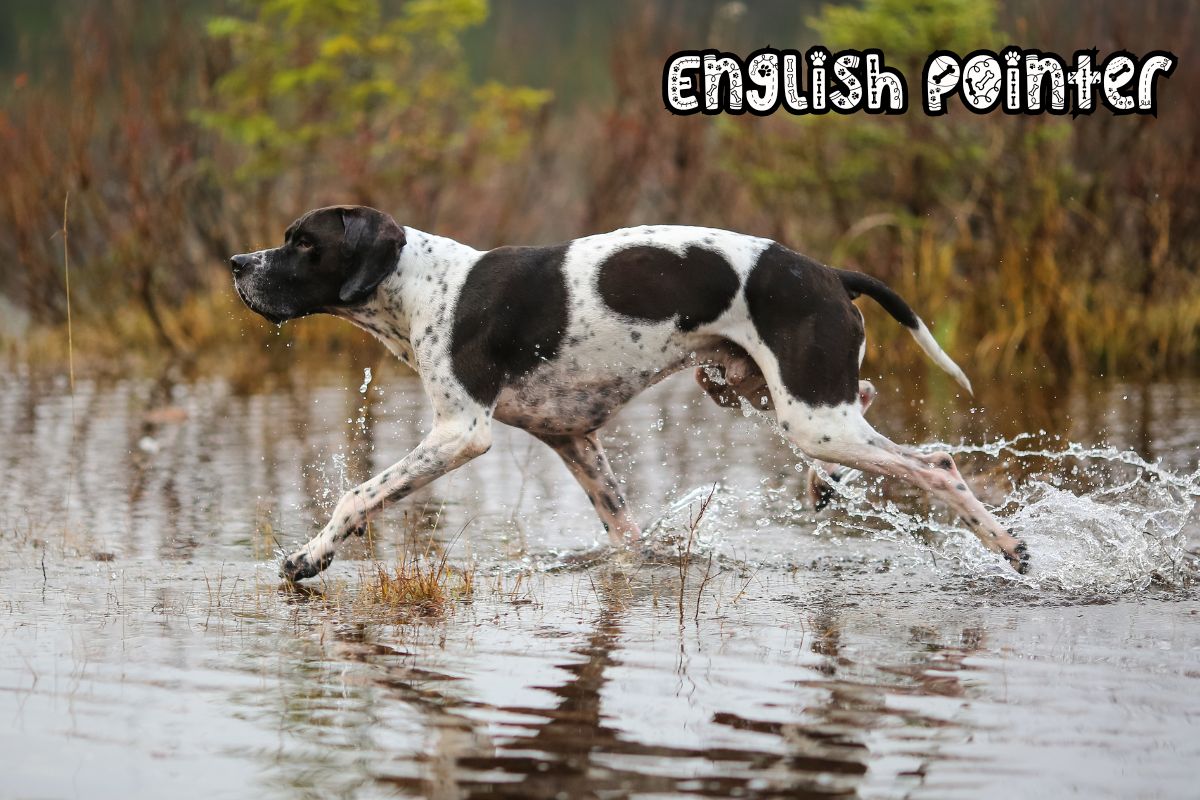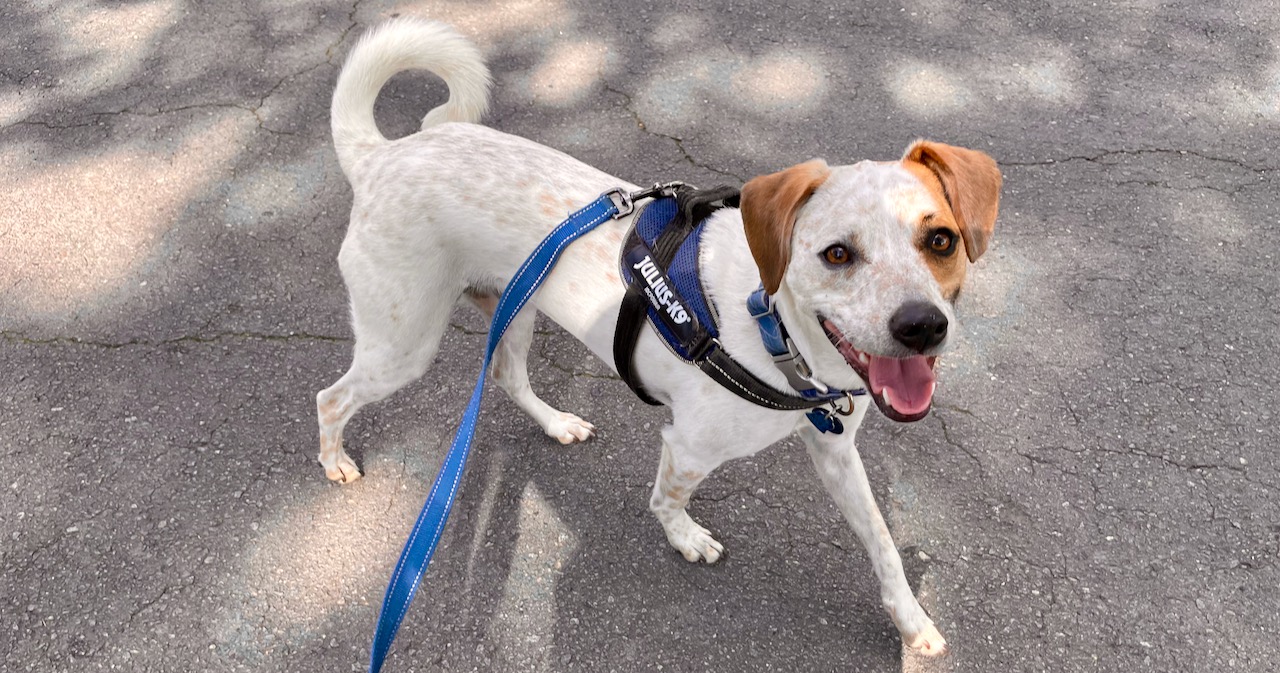Pointer dogs have been human companions for centuries and centuries. So if these dogs have a wide range of breed variations, it’d make complete sense. So I thought it’d be fun to look at all the accepted breeds and provide some insight into them.
Doing so will help anyone who wants a pointer select a type and understand their needs. I’ll also cover general care requirements for these breeds to provide a solid starting point. But before I cover those topics, it’s crucial to define what is a pointer dog.
What is a Pointer Dog?
Pointer or pointing dogs are breeds developed to track a prey animal’s scent and instinctually freeze once they locate it. From there, the canine will hold one paw up, point its tail upwards, and signal with its nose or set themselves towards the scent. It’s an effective way for humans to hunt animals, such as rabbits and other small game.
This signaling process is also where the name pointer dog originates. In other words, they point at their prey rather than running toward and scaring it. So it’s a much more reliable method of using your dog during a hunt.
5 Most Popular Types of Pointer Dogs
At this point, I’d imagine some readers will wonder if any dog can be a pointer. You certainly can train dogs to point with enough time and patience (some dogs won’t pick up the skill no matter what). However, the pointer label is only for dogs selectively bred to promote this trait.
So by definition, it only leaves us with five pointer or pointing dog breeds. Let us take a look at all these top-tier hunting dogs!
1. English Pointers
There’s no other place to start than with English Pointers. In most cases, this breed is what people are picturing when they think of pointing dogs. You won’t find many dogs better suited to be on the hunting trail than this intelligent, loyal breed.
In fact, English Pointers aren’t only experts at the art of pointing. These dogs are excellent at retrieving and honoring when on a hunt. It makes them a versatile resource when trying to find prey.
As for their appearance, English Pointers are a medium-sized breed with a weight range between 45 and 75 pounds. It’s a physical profile created from an ancestry that combines a cocktail of Bull Terriers, Foxhounds, Bloodhounds, and other similar breeds.
I’d be doing a disservice not to mention their docile temperament. English Pointers are known for their family-friendly personality and need for exercise. Dog owners can feel comfortable bringing them into their homes without much trouble.
The only issue that arises is if their exercise needs aren’t met. In those cases, they become bored and prone to taking out their frustration on items around the house. So owners who won’t be home much should look at other breeds, or you can wave goodbye to your furniture.
2. English Setters

English Setters are different than what you can expect from other English Pointers. These dogs don’t point toward the prey animals (usually birds) but set themselves in place when spotting them. From there, owners will provide a command to permit them to chase the birds.
In response, the birds will fly up and become easy targets for a human’s rifle. It’s an extremely convenient way to hunt, especially for birds. So it’s common to see English Setters on the hunting trails.
It won’t be too difficult to notice their 60 to 80-pound frames, either. These dogs have a rather imposing build compared to what people expect. They also stand out with their beautiful speckled coat patterns.
But my favorite aspect of English Setters is their personality. These dogs love to gain their owner’s attention and form loyal bonds. So don’t let the rough hunting dog stigma trick you into thinking these setters aren’t excellent family dogs.
They even have a stubborn streak that can be frustrating but funny. It’s another wrinkle in what makes English Setters such a wonderful dog breed. Plus, this stubbornness makes the training process a rewarding bonding experience.
3. Gordon Setter

Gordon Setters began their journey around the 19th century in Scotland. During this time, these fantastic dogs with their black/tan coats soon became favorites. Their incredible tracking ability and builds (up to 80 pounds) made them a hunter’s best friend.
Over time, people started seeing them for more than their hunting capabilities. They evolved into being companions who take pride in keeping their families safe. Honestly, Gordon Setters can be a solid addition to almost any home.
But I’d suggest being cautious about feeding them in one sitting. These dogs love eating and throw down their means in record times. Due to this, Gordon Setters has a reputation for picking up bloat, so spread out feeding into two or three sessions.
I’d also suggest starting socialization and training as soon as possible. As mentioned earlier, they’re extremely protective and loyal to their families. So it can cause issues when they aren’t used to being around other pets/humans. As a result, exposing them to new things early can help mitigate this potential problem.
4. Irish Setter

The first thing to know about Irish Setters is they hail from the land known for Guinness and the Cliffs of Moher, Ireland. Their history dates back way before the 19th century. However, this time frame is when people started to separate these dogs from English Setters.
After people distinguished them from English types, they soon became a recognized breed. It was all made possible by Irish Setters having different coat colors. Setters from Ireland often have a red or brownish coat rather than the traditional Belton.
Another distinct difference is that Irish Setters are often smaller than English ones. These dogs will often top out at 70 pounds rather than 80 pounds. But this smaller stature doesn’t stop them from being truly effective hunting dogs.
Irish Setters are also known for their overly friendly disposition. They don’t have any problem meeting strangers, often even having jobs as therapy dogs. Few breeds enjoy living life more than these setters from Ireland.
5. Irish Red and White Setter

Our final pointer breed is called the Irish Red/White Setter. It stands out among these other types because of its rich heritage. In fact, these pointers have a history dating further back than even the Irish Setter.
But the red and white setter has become much less popular than their cousin. It stems from people often preferring the complete auburn coloring over this red/white mixture. But I don’t fall into that category as I love the red-on-white combination.
These setters also have a reputation for being dog-friendly and kid-friendly. So they wouldn’t have any trouble fitting into multi-dog households. I can’t say the same about other pointer breeds on this list.
As for their size, Irish Red/White Setters often fluctuate between 30 and 60 pounds. Their presence won’t be overwhelming in any house, except a studio apartment. Honestly, they may be my favorite among the pointer dog breeds.
While these are the most common types of pointer dogs, there are a few more recognized by the AKC, including:
- Bracco Italiano
- Brittany
- German Shorthaired Pointer
- German Wirehaired Pointer
- Spinone Italiano
- Vizsla
- Weimaraner
- Wirehaired Pointing Griffon
- Wirehaired Vizsla
General Care Requirements for Pointer Dog Breeds
Anyone who decides a Pointer breed is right for them must know a few things about their care requirements. It’s essential to ensure your Pointer breed remains in top-tier condition and healthy for a long time.
1. Exercise
Exercise is a fundamental component of keeping these breeds happy. Pointer breeds require a significant amount to keep them from getting bored. Owners will need to provide two to three hours daily for necessary stimulation.
At first, this number may seem daunting. But there are several ways to accomplish hitting this standard, such as walks, hikes, swimming, play sessions, or even training. So it won’t be too difficult to find something that works.
You can even enroll them in classes or set up daily dog-walking appointments. It’s just a simple matter of ensuring any pent-up energy is released healthily. Otherwise, unwanted behaviors may present themselves.
2. Training and Socialization
Pointer breeds should receive training as soon as possible. I’d start around ten or so weeks old to ingrain the commands so they don’t build up their stubbornness. Furthermore, training younger dogs is easier because they aren’t set in their ways.
Similarly, early socialization is necessary to prevent issues with other pets or strangers. Doing so will make them feel much more comfortable around unfamiliar situations. Plus, it’ll help keep their hunting instinct in check around smaller animals.
3. Health Concerns
Pointer dog breeds do have some common heath issues. For instance, owners must look out for eye conditions. You can get a handle on them by keeping up with regular vet visits to prevent being caught off-guard.
Another pointer breed issue is hip dysplasia. It refers to a condition where the hip joint never longer functions correctly. In most cases, this problem affects older dogs but it’s still worth monitoring at younger ages.
Dental health is crucial with any dog, but especially pointer breeds. So I’d recommend establishing a routine for brushing daily with dog-related products. In other words, you’ll need to purchase dog toothbrushes and toothpaste.

4. Grooming
Pointer breeds aren’t known for having extensive grooming needs. Owners can get by with a weekly brushing to keep their short coats in good shape. I’d also clean their coats every week with soft gloves to ensure matting doesn’t occur.
Aside from coat grooming, do daily ear and eye checks. Owners must get a handle on any build-ups before they become problematic. Nail care also isn’t anything to overlook, as pointer dogs require regular trimming.
Conclusion
All in all, the number of accepted pointer dog types isn’t overwhelming. You have the English Pointer, English Setter, Gordon Setter, Irish Setter, and the Irish Red/White Setter. It won’t be too difficult to pick one that meets your needs as an owner.
But anyone who has additional questions can leave a post in our comment section. I’d love to continue helping you find the perfect dog for your home. Owners of these breeds are also welcome to share their stories and experiences. Thanks for reading!



